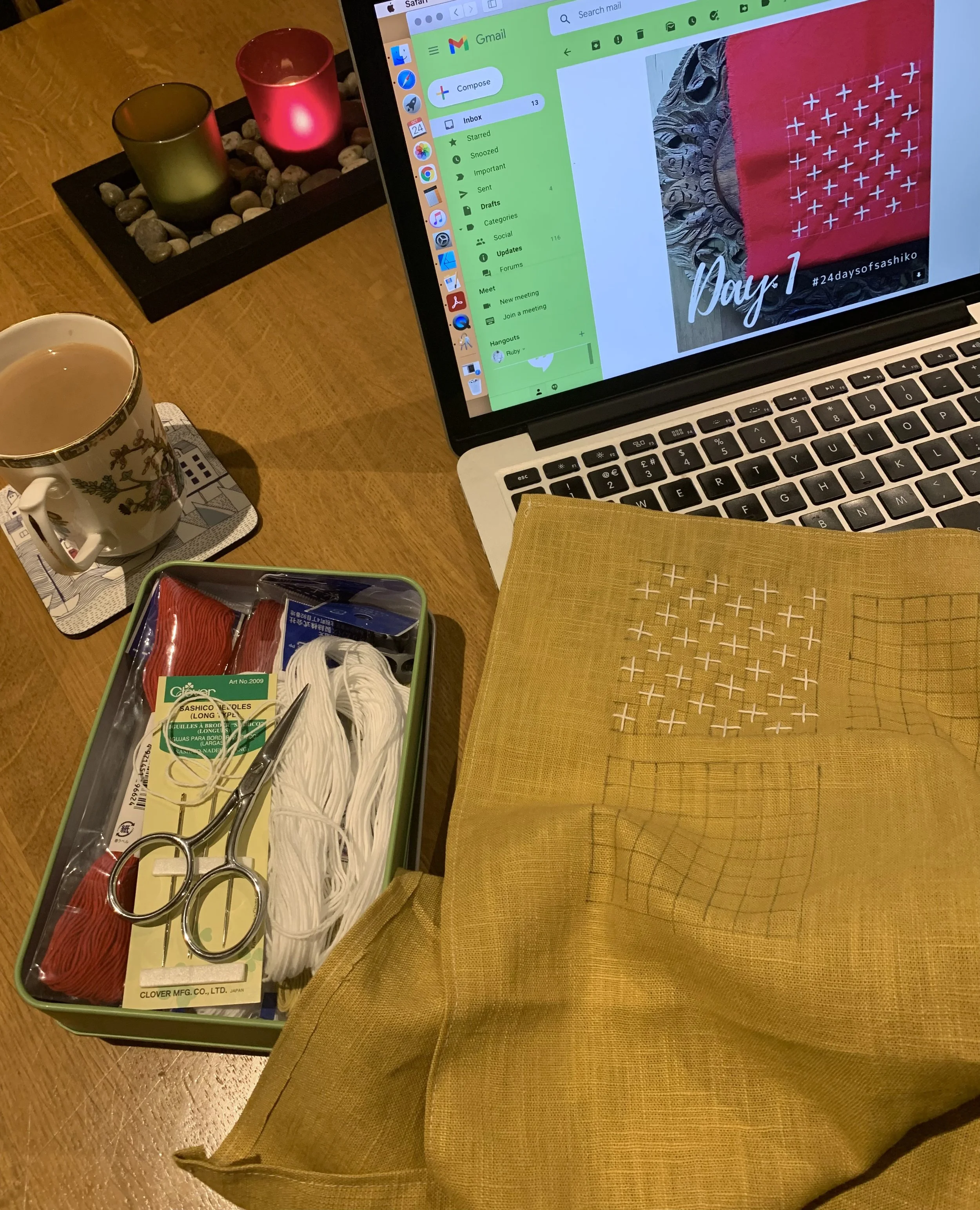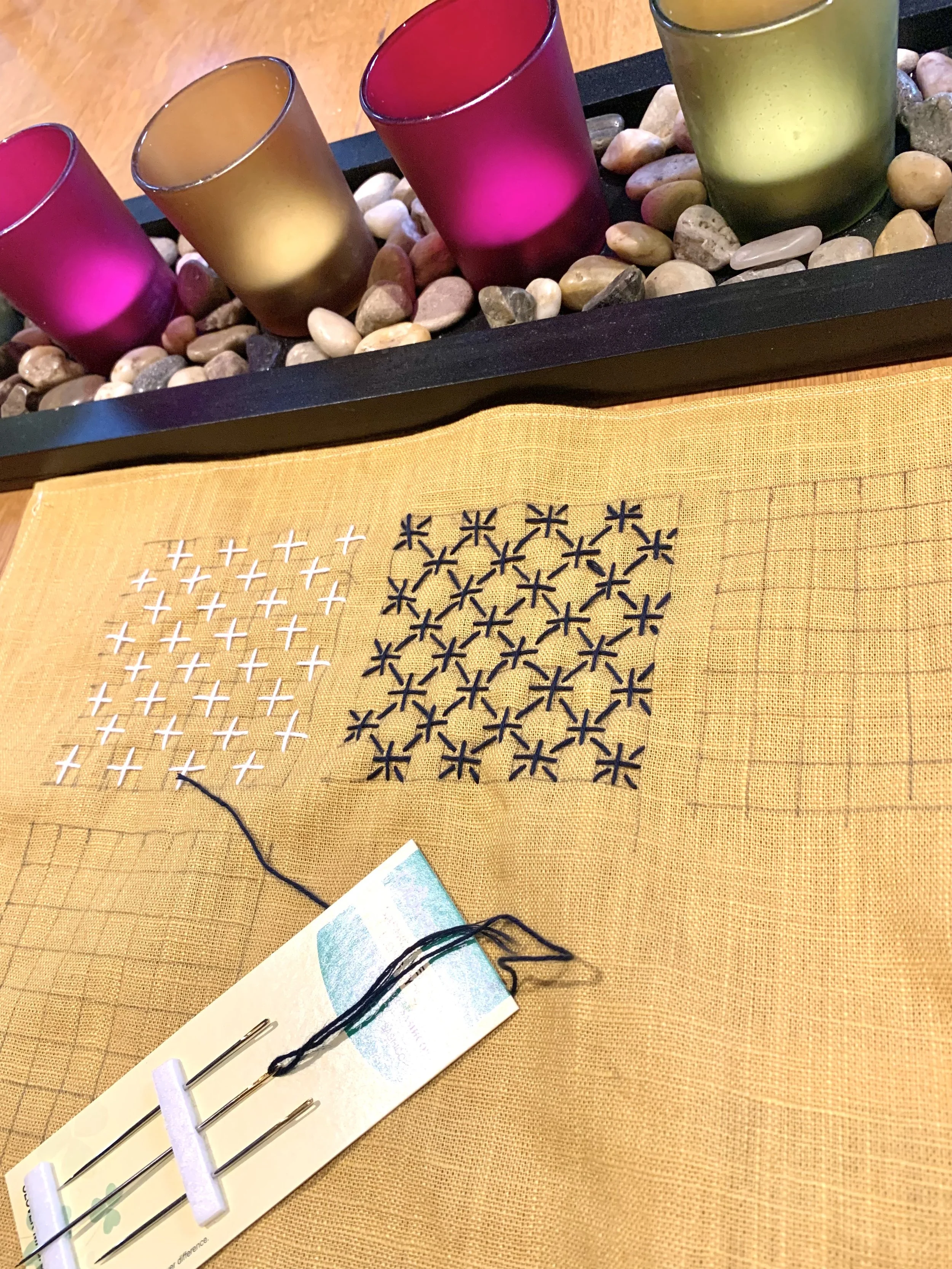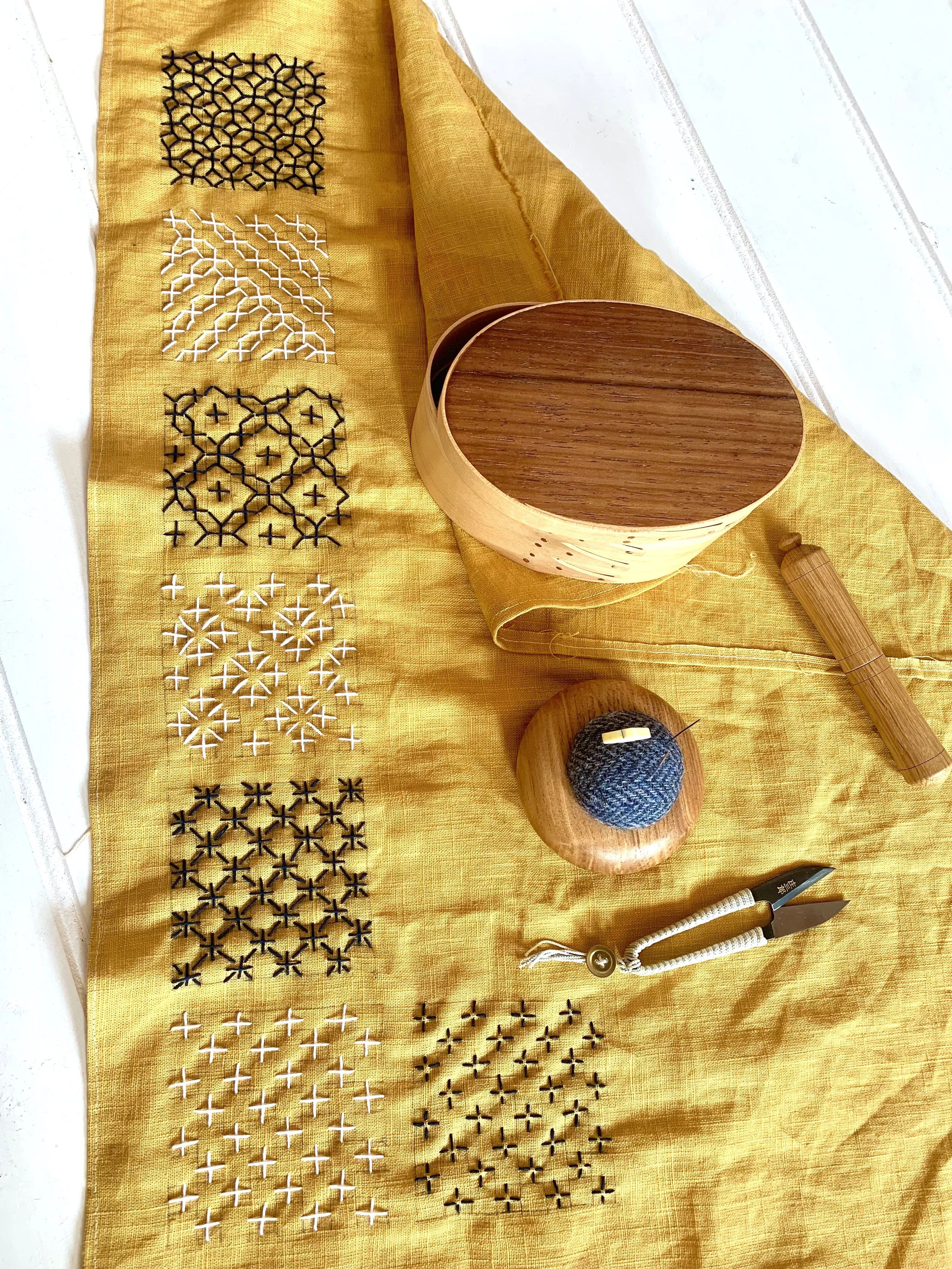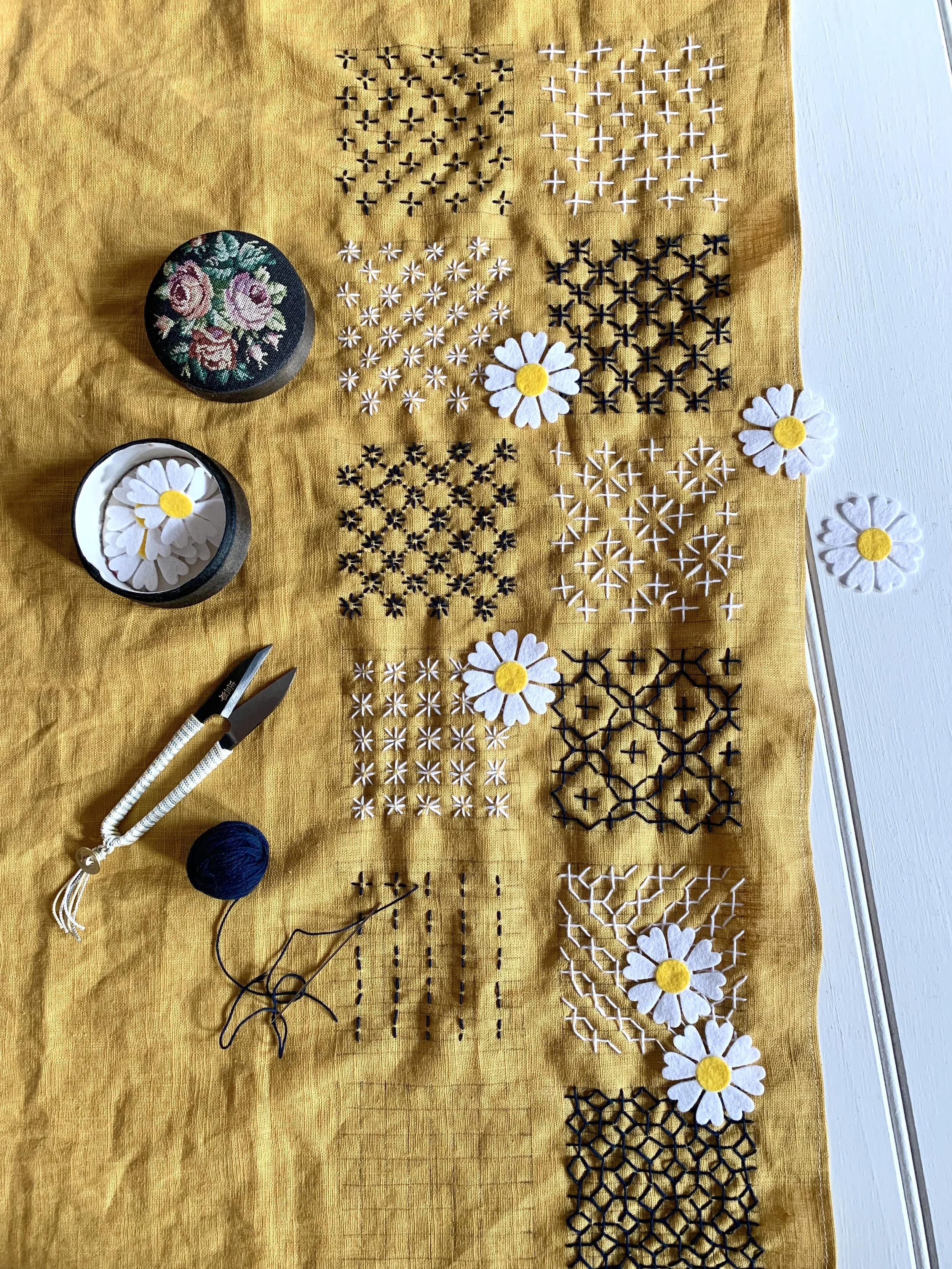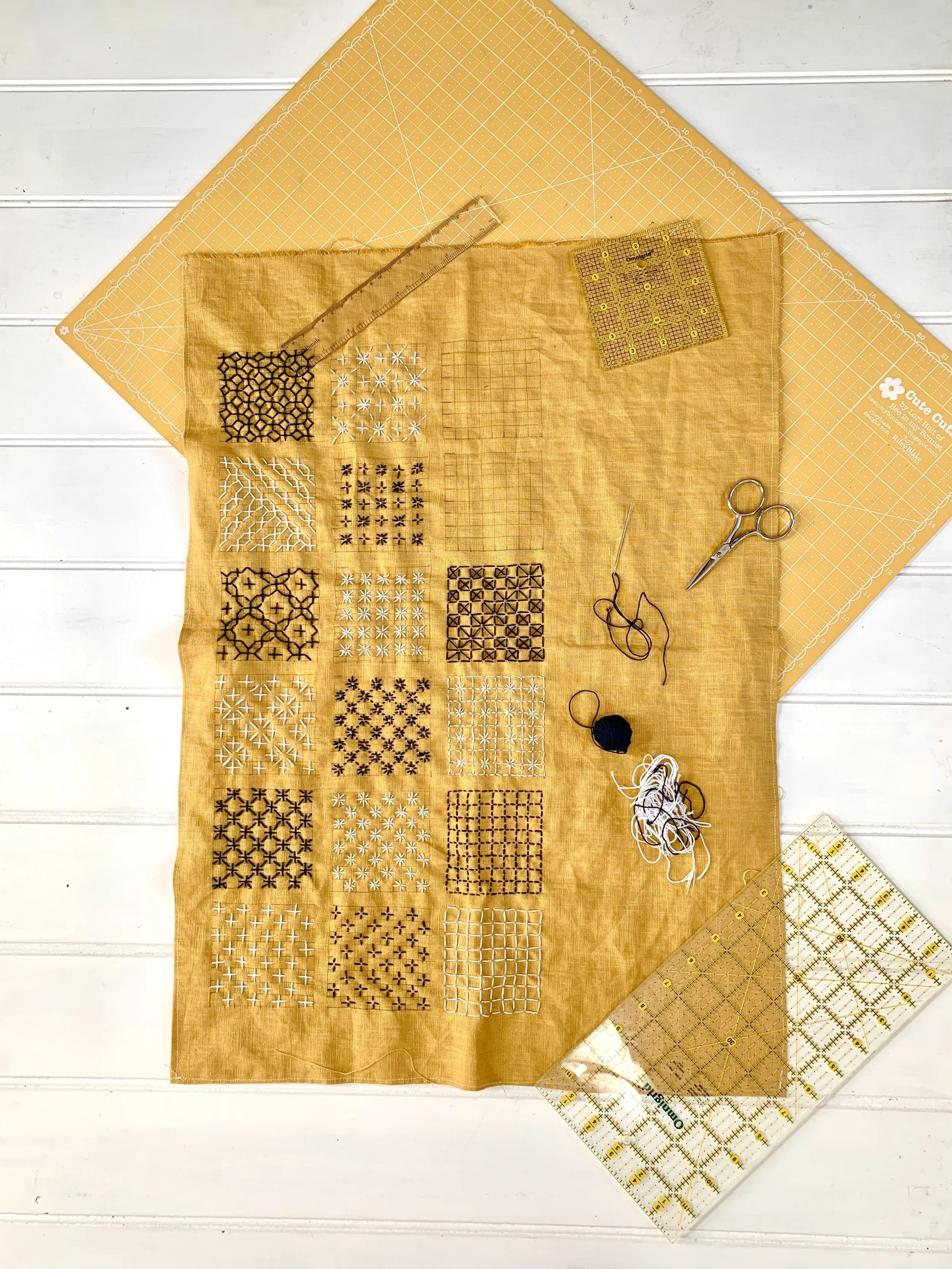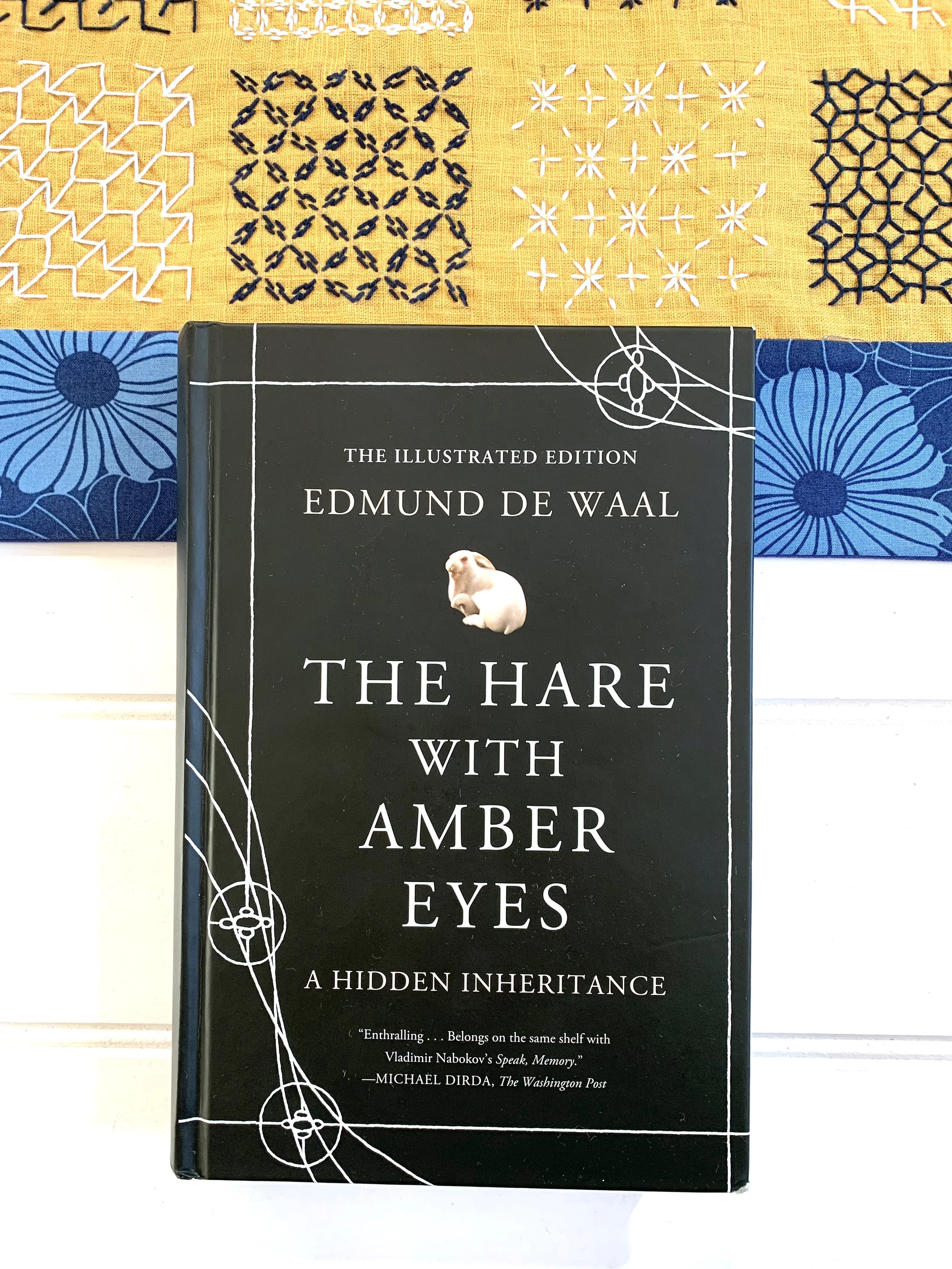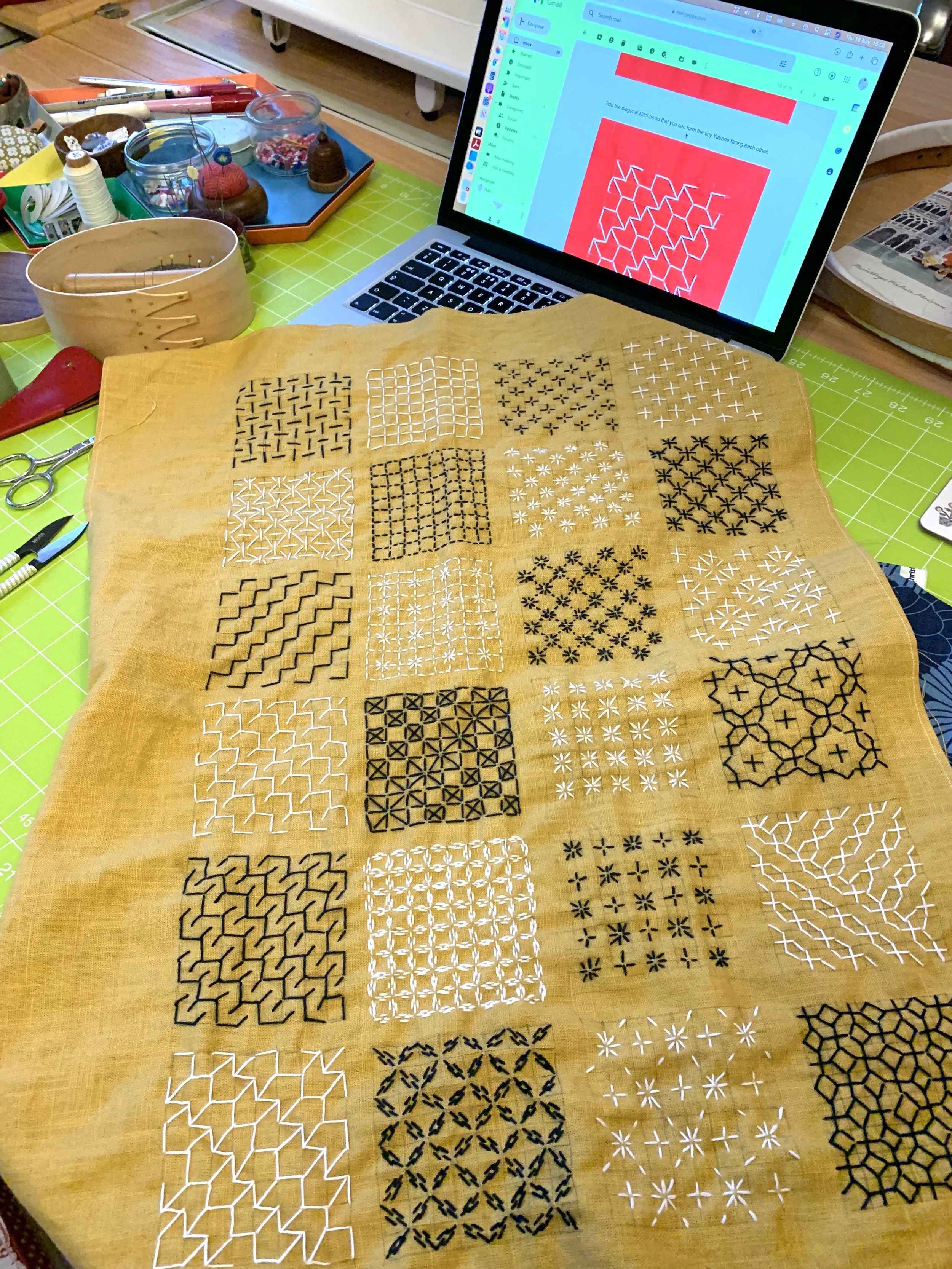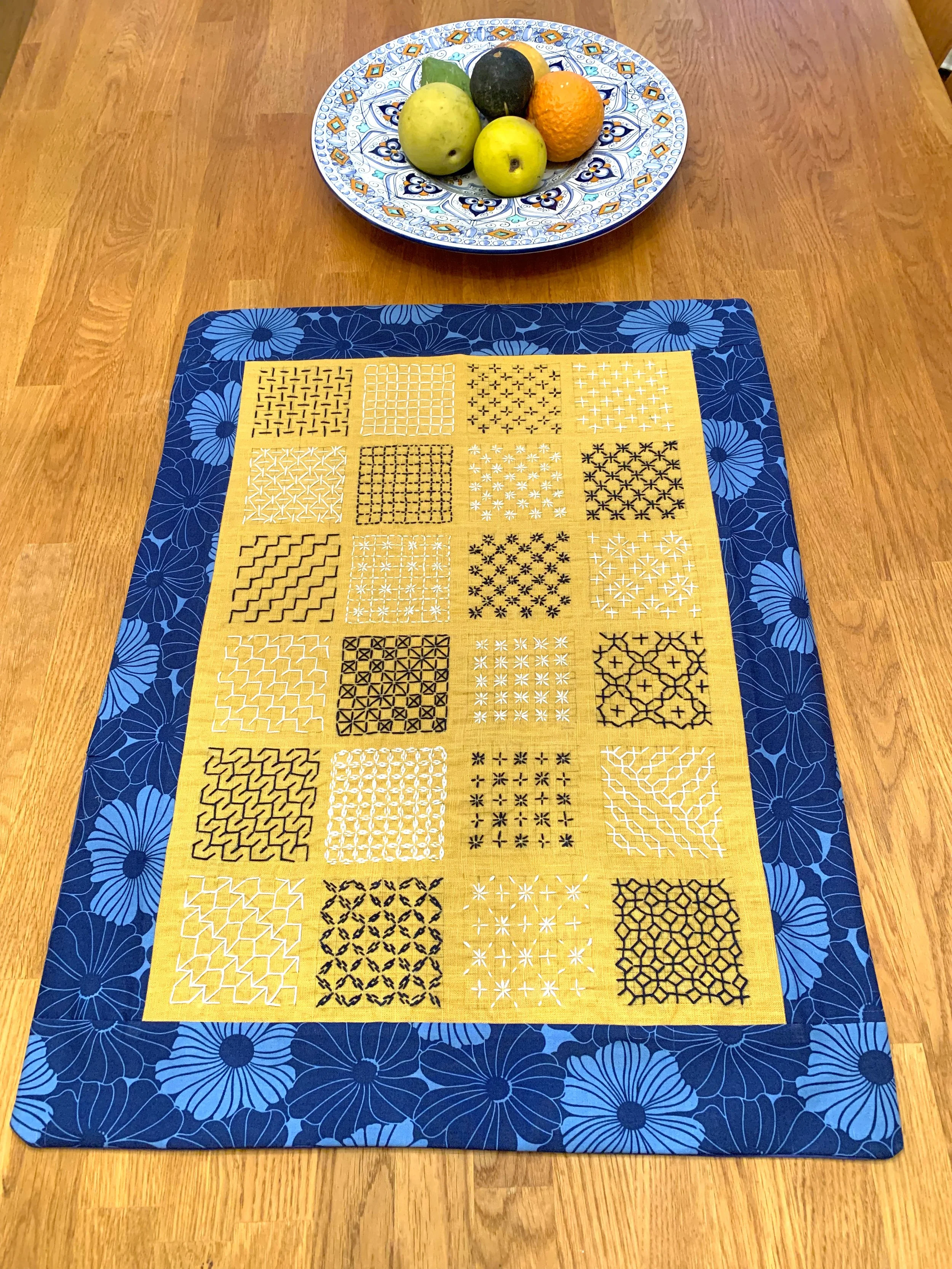24 Days of Sashiko ...
/The real joy of the internet is stuff like this….. I mean, seriously, it is just a wondrous thing to be able to follow a little programme like this, share your work and be amazed by people from all over the world, doing the exact same thing in every kind of coloured thread on every tone of cloth. It connects you to fellow stitchers and opens up new worlds of possibilities.
24 Days of Sashiko is run by Kazue Yoshikawa of Sashiko.lab in Japan and it was free to sign up and receive a new pattern each day to stitch. The squares are 8cm with a 1cm grid so it is not to small and the way the course is structured, you see how stitch patterns build up. I have done some limited sashiko embroidery before but this was perfect to really launch me into this new world of intricate patterns that look so effective on linen.
I decided to work on a gold coloured linen as I am in a bit of ‘yellow phase’ at the moment and I had some Sashiko thread that I had bought a long time ago in Tokyo, when we were lucky enough to visit Japan. At the time, I had no idea what it really was for, but as is often the case with these impulse buys, they find their way to their purpose in the end. I chose to work a checker board pattern alternating between white and navy blue thread.
On cosy winter evenings, a little hand sewing can be such a lovely thing to do and this became a ritual. I have never been one for feeling hemmed in with sewing but this discipline was therapeutic and inspiring. Tea, a candle and a needle and thread. After not too long, I found myself delving a little deeper into the world of Sashiko which has sort of been sitting on the fringes of my embroidery consciousness for quite some time.
I have written before about this, but if you are new to my journal I will fill in a little background. I first began embroidering seriously when we lived in Moscow on an overseas posting with my husband’s job. I hosted a weekly class in Russian embroidery at our apartment on Sretensky Boulevard, which was run through the International Women’s Club. It was a fantastic experience, learning from a non english speaking russian lady who was an absolute master with the needle, but also hosting a multicultural group of ladies from all around the world who found themselves in Russia at that time. It was through this group that I first began to understand colour and culture and how these two things came together to produce a range of samplers in all sorts of different colour combinations. The Scandinavian ladies for example nearly always picked cool blues and greens and greys for their work and the Indian ladies chose vibrant reds and oranges to stitch in. IThe participants who fascinated me the most were actually the charming Japanese ladies who were outstandingly neat in their work and came with all their threads colour coded and organised in small boxes. The precision in everything was so interesting compared to the rather haphazard approach of an english woman like me (I like to think that is a reflection of our cottage gardens and the ensuing floribunda effect!). I learnt something from them and that was that taking time and care was important if you wanted to make something lasting and beautiful.
As the daily patterns started to build, I thought about those days working on a russian embroidery sampler, which was actually much more tricky than these patterns. Living abroad changes everything and broadens your horizons in incalculable ways. My love of embroidery from around the world began there and has been joy to me ever since.
The instructions and tips and advice for stitching this was excellent and every morning I would eagerly open up my email to see the next block. All the Sashiko patterns just use a straight small stitch. There is nothing really difficult about, just finding the rhythm of the stitches and seeing how they interlock to form such different effects. By the time I had a got a week into it and was following the progress of stitchers around the world, I was simply amazed at how the same form can look so different on different backgrounds and in alternative thread colours. It has just been the best fun to connect with others on Instagram and exchange a few words of admiration and encouragement. You began to feel part of a little community working on the same project from all corners of the globe. How wonderful is that!
I began to understand something else too - the texture and strength that these little blocks of geometric stitches added to the fabric. The whole idea of ‘Boro’ which I also discovered on Instagram was before my eyes. Ways of repairing and darning and at the same time, embellishing clothes with sashiko patterns seemed like the perfect solution in so many ways. I started reading about this too….and it felt like a whole new world of embroidery was before me. I thought how wonderful it was to have such a love for something that there is always more to discover about.
At the same time, I embarked on reading a book which had been on my wish list “The Hare with the Amber Eyes” by Edmund de Waal. Have you read it? It is an outstanding book for any lover of history and culture as the author traces the story of the collection of Japanese Netsuke that he has inherited from his illustrious forebears, the Ephrussi family. The book begins and ends in Japan, but the story really begins in Odessa, travels to Paris and then Vienna and then back to Odessa and concludes in Tokyo, having swept through just over a century of prosperity, fortune building, collecting, the total desecration of two world wars and a revolution and the obliteration of their lives as Jews in palatial splendour and vast wealth. The generations of this family live through the best of times and the worst of times and in the end, while the Netsuke reside in England in tranquility, it reminds us of our mortality and vulnerability as human beings.
When it was finished, I was just so converted to the whole process. On some days, the patterns seemed so simple, I wasn’t sure how effective they would be, but they all built up into the most lovely sampler. By this time I had already decided that I was going to make it into a table runner, so I washed it and pressed it carefully. I fished around in my stash and found the perfect fat quarter for the outer boarders (don’t you just love doing that?) fused some iron-on lightweight interfacing to the embroidery to stabilise it and finished it off with a plain blue back.
At the end of 24 days, I feel that I have reinforced some life thoughts: that daily rituals and routines bring calmness and order to the day; that simplicity and functionality are the best ingredients for beautiful creative projects; that straight lines can be anything but boring; that precision and care taking valuable skills.
I love the way this turned out in the end. You can read more about all of this and find lots of information and inspiration on Kazue’s website at Sashiko Lab here
Meanwhile I am looking forward to exploring more in the world of Sashiko and in the first instance I have bought Sashiko Lab’s pattern for a Christmas tree….I am excited to see how this goes. It would be the perfect decoration for the sewing room this festive season. Hope you will follow along and see.
See you next time, Ruby x



